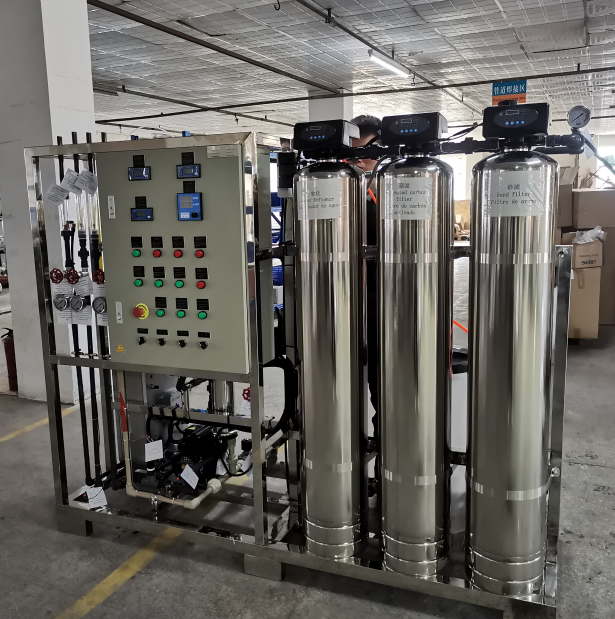
Wechat/Whatsapp:
+8613798883773

Wechat/Whatsapp:
+8613798883773
HYWATER Water filtration system


Reverse osmosis system Analysis Reverse osmosis is the use of reverse osmosis membranes to selectively pass through solvents (generally water) and retain ionic substances. The static pressure difference between the two sides of the membrane is used as the driving force to overcome the osmotic pressure of the solvent and allow the solvent to pass through the reverse osmosis membrane, then realize the membrane process of separating the liquid and mixture. Process principle of reverse osmosis system 1) Semi-permeable membrane: The membrane that can only allow solvent molecules to pass through but not solute molecules is called ideal semi-permeable. 2) Osmosis: Under the same external pressure, when the solution and the pure solvent are separated by a semi-permeable membrane, the phenomenon that the pure solvent will pass through the semi-permeable membrane to make the solution thinner is called osmosis. 3) Osmotic equilibrium: During the osmosis process, the number of solvent molecules passing through the semipermeable membrane from two opposite directions per unit time is equal to each other, that is, the osmotic equilibrium is reached. 4) Osmotic pressure: When the semi-permeable membrane separates the solution from the pure solvent, the extra pressure added to the original solution to prevent the pure solvent from entering the solution is called osmotic pressure. Generally, the more concentrated the solution, the greater the osmotic pressure of the solution. 5) Reverse osmosis: If the pressure applied to the solution exceeds the osmotic pressure, the solvent in the solution will flow toward the pure solvent, this process is called reverse osmosis. Technical characteristics of reverse osmosis system 1) The solute and water can be separated under the condition of no phase change at room temperature, which is suitable for the separation and concentration of heat-sensitive substances, and consume lower energy compared with the separation method with phase change. 2) A wide range of impurity can be removed by reverse osmosis system, not only can remove dissolved inorganic salts, but also various organic dipper impurities. 3) High desalination reuse rate, can intercept solutes with a particle size of a few nanometers or more. 4) Since pressure is only used as the driving force for membrane separation, the separation device is simple, easy to operate, self-control and maintain. 5) The reverse osmosis device requires the inlet water to reach a certain index before it can operate normally. Therefore, the raw water must adopt certain pretreatment measures before entering the reverse osmosis device. In order to extend the service life of the membrane, the membrane needt be cleaned regularly to remove dirt. Design and calculation of reverse osmosis system Typical process flow: A reverse osmosis system generally includes three main parts: pretreatment, reverse osmosis skid, and post-treatment. Similar to ultrafiltration processes, good pretreatment is necessary for long-term stable operation of reverse osmosis system. The pretreatment of reverse osmosis system mainly include: multi-media filtration, activated carbon filtration, security filtration, microfiltration or ultrafiltration, etc. The reverse osmosis system shall be designed based on source water quality, product water requirements and product water capacity, to determine the number of membrane elements, the arrangement of the membrane modules, and the recovery rate and desalination rate of the reverse osmosis system. More inquiries related to reverse osmosis system please contact: Mob& Wechat& WhatsApp: (+86)13544774483 Email: sales010@water-sy.com We will provide high-quality, all-round comprehensive professional services for project consulting, system design, manufacturing, installation and commissioning, personnel training, etc.
